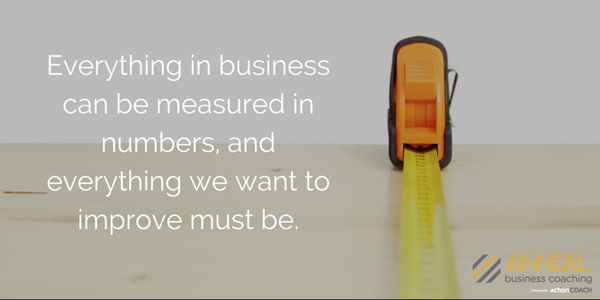5 MIN READ
Edward Deming, one of the great thinkers in business management, is supposed to have said: “If you do not measure it, you cannot manage it.”* The corollary to that statement is: If we don’t manage it, everything that happens to us - good or bad - is an accident.
Key Performance Indicators, or KPIs, are the measurements Deming spoke of, and they are expressed in numbers, often in the form of ratios as “something per something.” Some of us don’t like numbers, but stick with me because KPIs are critical to business success.
"If we don’t manage it, everything that happens to us - good or bad - is an accident."
Numbers are critical because they are specific and objective – they tell us what we need to know, whether or not we want to know and regardless of how we “feel” about it.
Compare these two statements:
“Sales per employee are up from $119,500 per year to $141,200 per year” and “I feel pretty good about sales this year.”
The first is useful.
Just by reading the numbers, everyone will know we are measuring them and that the numbers are important to us. That alone will have a positive effect. But even more, we can use the information to measure, direct and reward employees, to evaluate a sales initiative, to direct future expenditures, to build shareholder confidence and for many other purposes.
The second statement is not useful at all. Heck, we might feel good because it’s a pretty day – but then, what is a “pretty day?”
DOWNLOAD THE PRICE DISCOUNT CALCULATOR TO FIND OUT
Everything in business can be measured in numbers, and everything we want to improve must be.
Some things are easy to measure because our accounting already tracks them: Sales, profit, accounts receivable, accounts payable, gross margins, inventory, and the like. (What? You don’t track these things? We need to talk!)

Some things are harder to measure because accounting doesn’t track them directly, but we have the information: Average transaction in dollars, sales per employee, units produced per month, leads-to-sales conversions, lifetime value of a customer, etc.
A third category is hardest to measure because we have to define, gather and quantify the information: Quality, reputation, customer satisfaction, employee attitude, leadership, happiness, etc.
Selecting and tracking KPIs requires thought and effort, but the incentive is this: What gets measured, gets better. Jim Collins, author of Good to Great, says “…that every Good-to-Great company built a fabulous economic engine… because they attained profound insights into their economics.”
The insights were provided by what Collins calls “denominators,” in other words, KPIs.
KPIs are like stats in sports. It wouldn’t do for a basketball coach to simply yell at his defeated team: “Do better!” But if the same coach sees a stat showing his team is weak in free throw percentages, he can develop a drill to help them improve, and both he and they can track their improvement.
To see how KPIs provide useful insights, consider this real-world example.
A service company near me sends technicians to work at customer locations. This company had seven digit sales, but earned about one half of 1% of sales as net profit. That is a pretty dismal return on sales and hardly justified the risk of being in business.

The owner suspected that he was spending far too much in labor costs for the revenue his technicians brought in. His hourly charges were already higher than his competition, so he didn’t think price was the issue. What should he do?
The company chose to track a weekly KPI of billed man-hours divided by paid man-hours. In a perfect world in which every paid hour was billed, the KPI would be 100%. That became the ideal target.
The actual, beginning KPIs was a puny 32%. That meant that 68 out of every 100 payroll hours were not billed to customers. The KPI identified the problem, quantified it, provided a benchmark to improve on and an objective means to reward employees for improvement.
With their focus set on a specific problem, unbilled hours, he and his technicians set went to work to find out why. They found that inefficient routing, forgotten parts, “comped” hours, late starts, “go-backs,” schedule-wrecking “add-on” work, and long lunches were factors. All were specific activities that could be tracked and improved.
"Had last year’s ratio improved from 32% to just 50%, net profit would have been 419% higher."
This company now provides a weekly incentive to servicemen who meet or exceed a target “labor utilization rate” of 50% billed hours. Everyone in the company has the same goal.
We can easily see how the KPI provided the insight necessary to manage the specific activities that make a difference – and what a difference! This case is a work-in-progress, so we don’t know exactly how much things will improve. But we do know this: Had last year’s ratio improved from 32% to just 50%, net profit would have been 419% higher. It would be impossible to see that kind of improvement by accident.
The owner found an immensely useful KPI to manage his company. Every business has one. What’s yours? What do you need to improve? How will you measure it? How will you explain it to your team? How will they know how they are doing? How will you reward them or hold them accountable for improvement?